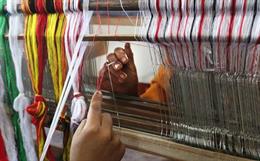Microorganismscan be found almost everywhere in the environment. NASA researchers have foundmicroorganisms even at a height of 32kms and to a depth 11kms in the sea.During oil drilling in the ground, to a depth of 400 Mts microorganisms havebeen found. For their growth and multiplication, the minimum nutritionalrequirements are water, a source of carbon, nitrogen and some inorganic salts.These are normally present in the natural environment. Textiles, by virtue oftheir characteristics and proximity to human body, provide an excellent mediumfor the adherence, transfer and propagation of infection-causing microbialspecies.
Increasingpublic awareness about the risks of microbial infection is growing demand forproducts. The most textiles currently used in hospitals are conductive to crossinfection or transmission of diseases caused by microorganisms, particularlybacteria and fungi. The medical textiles, such as fabric liners for prostheticsand casts, also require odor control. The conditions are damp and inclined tobacterial growth, which causes odor. An antimicrobial needs power, speed, anddurability to deal with those odors. The increasing need for incontinence odorcontrol is not just confine to garments, but also is required for bedspreads,linens and upholstery.
Antibacterialfibres and variable antibacterial chemicals available in international marketare mostly from synthetic base and are not environment friendly. Consumerpreference has changed and higher demands are placed on the functional fabricsthese new requirements necessitated a production process thats environmentfriendly. There are many natural plant products, which show anti-bacterialproperties for e.g. extracts from roots, stem, leaves, flowers, fruits andseeds of diverse species of plants exhibit anti bacterial properties. Theseanti bacterial extracts can be use as a textile finishing agents in the crudeform or as microcapsules to enhance the durability and controlled release ofthe extracts. To read more,







